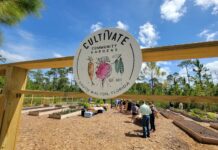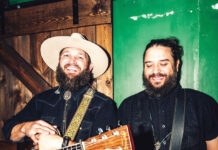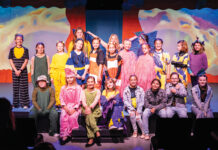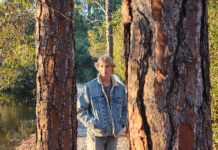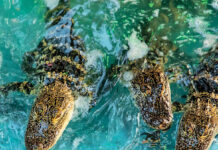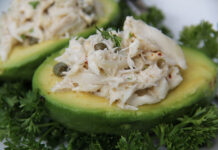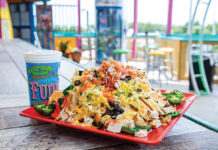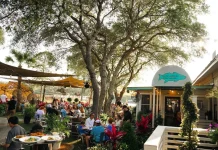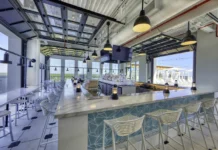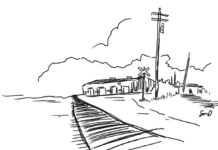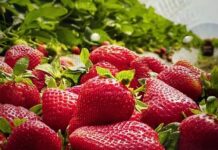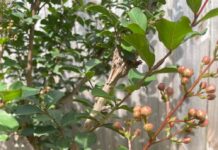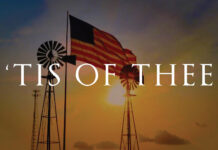By Heather Bennett Eye
Walton County has a few local celebrities that are familiar with the spotlight, but our woodland neighbors, the Florida Black Bear, are getting their time to shine. The Paper Bear, a nonprofit, is creating a soon-to-be-released feature film to bring awareness of the importance of biodiversity through the lives of the Florida Black Bears and a better understanding of how we can live in harmony with our environment. The film itself is a conservation movement.
“It’s a love letter to the state of Florida, and specifically the panhandle of Florida,” stated Co-Producer Arix Zalace on The Paper Bear Instagram. “It’s one of the most important regions in North America.” Besides the obvious, what makes the panhandle and Florida Black Bears so special that there’s an entire film being made? Let’s set the scene.
We know by the millions of people that flock to our sugar sand beaches and turquoise waters, that The Emerald Coast is a tourist hotspot, but did you know that we’re also a biodiversity hotspot? That’s right! We’re actually the epicenter of the North American Coastal Plain (NACP), which is 36th in the world, with The Florida Panhandle, home to rare coastal dune lakes and the Longleaf Pine ecosystem, being the 5th richest biodiverse spot in all of North America.
But what makes it a hotspot? The NACP has more than 1500 plant species not found anywhere else in the world and has lost more than 70% of its original surface area. In the Florida Panhandle, there are over 100 threatened or endangered species that live within the 57 different ecosystems in our area.
The key to conservation is the Florida Black Bear, known as an umbrella species. By focusing on the conservation of black bears and their habitats, we can also protect larger groups of species that share their home. “If you could pinpoint one animal specifically that essentially helps protect everything underneath it, the black bear is the largest most iconic species that we have here in the Florida Panhandle,” said Co-Producer Sean Couch in an interview with The 30A Company.
Many of you know someone who’s encountered a black bear or has encountered one themselves. There’s a lot of conversation around population control, food sources and why they’re knocking down your trash can. However, most of it’s not true. “There’s so much misinformation about the black bear. The sooner we get rid of the misinformation, the better we can have an educated discussion about this,” stated Arix in an interview with The 30A Company.
Black bears are actually self-regulating when it comes to their population. The gestation period for a female black bear is around seven months. However, there is a delayed implantation for the first five. The amount of food the female can find, or the amount of weight she can gain, will determine how many fertilized eggs will drop and develop into cubs.
Food sources are quite abundant within our forests. They eat around 73% plants, 22% insects and 5% meat. They’ll feed on nuts, seeds, berries, beetles, grubs and saw palmetto. They don’t like to chase their food if they don’t have to, so sometimes road kill is on the menu. “Just because you see bears coming into your community and getting in your trash means nothing about their population,” said Arix in the same interview. “Doesn’t mean they can’t find food. They’re opportunistic and you’ve got good food.”
So what should you do if you come face to face with a Florida Black Bear? Stay calm, and don’t go towards it. Remember it’s probably just as scared of you and you are scared of it. Most of the noises they make, we mistake for aggression. They may huff, click their teeth, stomp their feet or even false charge. However, they are just anxious and trying to let us know not to come closer because they are uncomfortable, too.

The Paper Bear Film switches from live action to animation as it hopes to shed more light on this species that is key to the survival of so many others. The premise is a coming-of-age story about a young boy and his father, who are working to track and research black bears in the Florida Panhandle, aiming to gain deeper insights into their behavior. Initially hesitant about the trip, the son undergoes a transformative journey as he develops his own understanding and appreciation for nature along the way. On a post from The Paper Bear’s Instagram, Arix Zalace says, “It’s a story you’ll love, you’ll laugh, you’ll cry, and hopefully you’ll want to protect when it’s all said and done.”
I’m proud to have our beautiful region highlighted on such a big stage for such an important reason. As The Paper Bear team works on finishing up the film, let’s take a moment to consider our impact on the environment and the critical importance of our actions today, and how they shape our home for generations to come.
If you’d like to learn more or get involved, please visit www.thepaperbear.org. You can donate or sign up to join their ambassador program. There are also links to other local non-profits that benefit conservation.
Visits: 5





